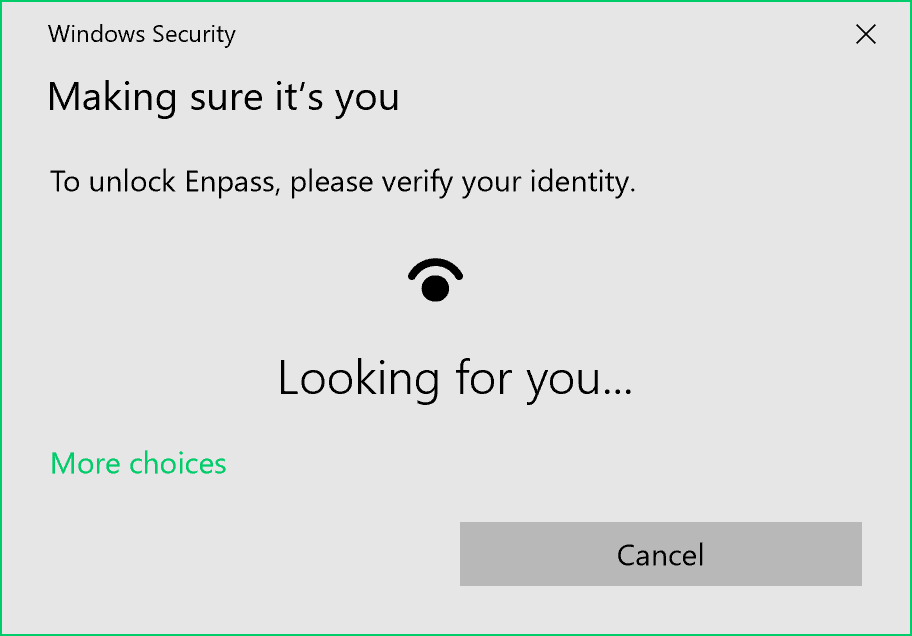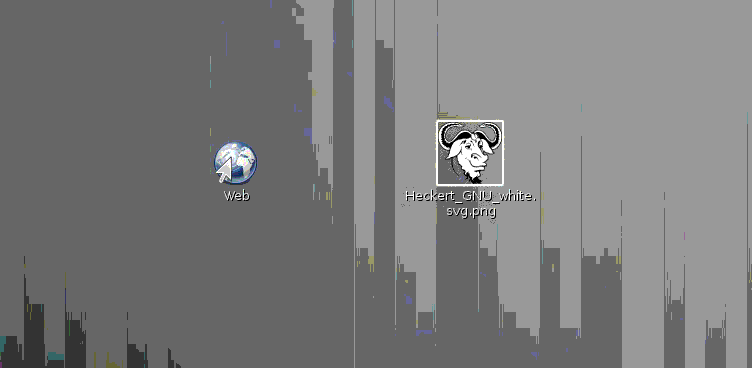|
SmartFTP
SmartFTP is a network file transfer program for Microsoft Windows that supports file transfer via FTP, FTPS, SFTP, WebDAV, Amazon S3, Google Drive, Microsoft OneDrive, Box, Google Cloud Storage and Backblaze B2 protocols. It supports SSL/TLS, IPv6 and FXP, and features a transfer queue, proxy and firewall support, multiple connections, chmod features and drag-and-drop. The software uses the Windows API for its interface. It is available for both IA-32 and x64 editions of Windows. Prior to July 2008, the program was free to home or non-profit users. Editions SmartFTP is available in three editions: Professional * FTP, FTPS * SFTP over SSH * WebDAV * Text Editor Ultimate * All features of the Professional Edition * Google Drive * OneDrive support * Terminal client Enterprise * All features of the Ultimate Edition * Amazon S3 * Google Cloud Storage * Backblaze B2 * Box * Task scheduler See also *Comparison of FTP client software The following tables compar ... [...More Info...] [...Related Items...] OR: [Wikipedia] [Google] [Baidu] |
FTP Clients
The following tables compare general and technical information for a number of File Transfer Protocol (FTP) clients. Unless otherwise specified in footnotes, comparisons are based on the stable versions without any add-ons, extensions, or external programs. Free and open-source software Proprietary freeware Freeware and commercial editions Trials of commercial Commercial Operating system support The operating systems the clients can run on. (CL) Command-Line interface only – no GUI (Graphical user interface) Protocol support Information about what internet protocols the clients support. External links lead to information about support in future versions of the clients or extensions that provide such functionality. See also * File Transfer Protocol The File Transfer Protocol (FTP) is a standard communication protocol used for the transfer of computer files from a server to a client on a computer network. FTP is built on a client–server model architecture usi ... [...More Info...] [...Related Items...] OR: [Wikipedia] [Google] [Baidu] |
WebDAV
WebDAV (Web Distributed Authoring and Versioning) is a set of extensions to the Hypertext Transfer Protocol (HTTP), which allows user agents to collaboratively author contents ''directly'' in an HTTP web server by providing facilities for concurrency control and namespace operations, thus allowing Web to be viewed as a ''writeable, collaborative medium'' and not just a read-only medium. WebDAV is defined in by a working group of the Internet Engineering Task Force (IETF). The WebDAV protocol provides a framework for users to create, change and move documents on a server. The most important features include the maintenance of properties about an author or modification date, namespace management, collections, and overwrite protection. Maintenance of properties includes such things as the creation, removal, and querying of file information. Namespace management deals with the ability to copy and move web pages within a server's namespace. Collections deal with the creation, rem ... [...More Info...] [...Related Items...] OR: [Wikipedia] [Google] [Baidu] |
File EXchange Protocol
File eXchange Protocol (FXP or FXSP) is a method of data transfer which uses FTP to transfer data from one remote server to another ( inter-server) without routing this data through the client's connection. Conventional FTP involves a single server and a single client; all data transmission is done between these two. In the FXP session, a client maintains a standard FTP connection to two servers, and can direct either server to connect to the other to initiate a data transfer. The advantage of using FXP over FTP is evident when a high-bandwidth server demands resources from another high-bandwidth server, but only a low-bandwidth client, such as a network administrator working away from location, has the authority to access the resources on both servers. Risk Enabling FXP support can make a server vulnerable to an exploit known as FTP bounce. As a result of this, FTP server software often has FXP disabled by default. Some sites restrict IP addresses to trusted sites to limit t ... [...More Info...] [...Related Items...] OR: [Wikipedia] [Google] [Baidu] |
Windows 10
Windows 10 is a major release of Microsoft's Windows NT operating system. It is the direct successor to Windows 8.1, which was released nearly two years earlier. It was released to manufacturing on July 15, 2015, and later to retail on July 29, 2015. Windows 10 was made available for download via MSDN and TechNet, as a free upgrade for retail copies of Windows 8 and Windows 8.1 users via the Windows Store, and to Windows 7 users via Windows Update. Windows 10 receives new builds on an ongoing basis, which are available at no additional cost to users, in addition to additional test builds of Windows 10, which are available to Windows Insiders. Devices in enterprise environments can receive these updates at a slower pace, or use long-term support milestones that only receive critical updates, such as security patches, over their ten-year lifespan of extended support. In June 2021, Microsoft announced that support for Windows 10 editions which are not in the Long ... [...More Info...] [...Related Items...] OR: [Wikipedia] [Google] [Baidu] |
IPv6
Internet Protocol version 6 (IPv6) is the most recent version of the Internet Protocol (IP), the communications protocol that provides an identification and location system for computers on networks and routes traffic across the Internet. IPv6 was developed by the Internet Engineering Task Force (IETF) to deal with the long-anticipated problem of IPv4 address exhaustion, and is intended to replace IPv4. In December 1998, IPv6 became a Draft Standard for the IETF, which subsequently ratified it as an Internet Standard on 14 July 2017. Devices on the Internet are assigned a unique IP address for identification and location definition. With the rapid growth of the Internet after commercialization in the 1990s, it became evident that far more addresses would be needed to connect devices than the IPv4 address space had available. By 1998, the IETF had formalized the successor protocol. IPv6 uses 128-bit addresses, theoretically allowing 2128, or approximately total addresses ... [...More Info...] [...Related Items...] OR: [Wikipedia] [Google] [Baidu] |
Secure File Transfer Program
is a command-line interface client program to transfer files using the SSH File Transfer Protocol (SFTP), which runs inside the encrypted Secure Shell connection. It provides an interactive interface similar to that of traditional command-line FTP clients. One common implementation of is part of the OpenSSH project. There are other command-line SFTP clients that use different names, such as lftp, PSFTP and PSCP (from PuTTY package) and WinSCP. See also * SSH File Transfer Protocol * Comparison of SSH servers * Comparison of SSH clients An SSH client is a software program which uses the secure shell protocol to connect to a remote computer. This article compares a selection of notable clients. General Platform The operating systems or virtual machines the SSH clients ... References Command-line software SSH File Transfer Protocol clients {{security-software-stub ... [...More Info...] [...Related Items...] OR: [Wikipedia] [Google] [Baidu] |
IA-32
IA-32 (short for "Intel Architecture, 32-bit", commonly called i386) is the 32-bit version of the x86 instruction set architecture, designed by Intel and first implemented in the 80386 microprocessor in 1985. IA-32 is the first incarnation of x86 that supports 32-bit computing; as a result, the "IA-32" term may be used as a metonym to refer to all x86 versions that support 32-bit computing. Within various programming language directives, IA-32 is still sometimes referred to as the "i386" architecture. In some other contexts, certain iterations of the IA-32 ISA are sometimes labelled i486, i586 and i686, referring to the instruction supersets offered by the 80486, the P5 and the P6 microarchitectures respectively. These updates offered numerous additions alongside the base IA-32 set including floating-point capabilities and the MMX extensions. Intel was historically the largest manufacturer of IA-32 processors, with the second biggest supplier having been AMD. During th ... [...More Info...] [...Related Items...] OR: [Wikipedia] [Google] [Baidu] |
Windows API
The Windows API, informally WinAPI, is Microsoft's core set of application programming interfaces (APIs) available in the Microsoft Windows operating systems. The name Windows API collectively refers to several different platform implementations that are often referred to by their own names (for example, Win32 API); see the versions section. Almost all Windows programs interact with the Windows API. On the Windows NT line of operating systems, a small number (such as programs started early in the Windows startup process) use the Native API. Developer support is available in the form of a software development kit, Microsoft Windows SDK, providing documentation and tools needed to build software based on the Windows API and associated Windows interfaces. The Windows API (Win32) is focused mainly on the programming language C in that its exposed functions and data structures are described in that language in recent versions of its documentation. However, the API may be used by an ... [...More Info...] [...Related Items...] OR: [Wikipedia] [Google] [Baidu] |
Drag-and-drop
In computer graphical user interfaces, drag and drop is a pointing device gesture in which the user selects a virtual object by "grabbing" it and dragging it to a different location or onto another virtual object. In general, it can be used to invoke many kinds of actions, or create various types of associations between two abstract objects. As a feature, drag-and-drop support is not found in all software, though it is sometimes a fast and easy-to-learn technique. However, it is not always clear to users that an item can be dragged and dropped, or what is the command performed by the drag and drop, which can decrease usability. Actions The basic sequence involved in drag and drop is: * Move the pointer to the object * Press, and hold down, the button on the mouse or other pointing device, to "grab" the object * "Drag" the object to the desired location by moving the pointer to this one * "Drop" the object by releasing the button Dragging requires more physical effort th ... [...More Info...] [...Related Items...] OR: [Wikipedia] [Google] [Baidu] |
Chmod
In Unix and Unix-like operating systems, is the command and system call used to change the access permissions and the special mode flags (the ''setuid'', ''setgid'', and ''sticky'' flags) of file system objects ( files and directories). Collectively these were originally called its modes, and the name was chosen as an abbreviation of ''change mode''. History A command first appeared in AT&T UNIX version 1, along with the system call. As systems grew in number and types of users, access-control lists were added to many file systems in addition to these most basic modes to increase flexibility. The version of bundled in GNU coreutils was written by David MacKenzie and Jim Meyering. The command is available as a separate package for Microsoft Windows as part of the UnxUtils collection of native Win32 ports of common GNU Unix-like utilities. The command has also been ported to the IBM i operating system. Command syntax Throughout this section, ''ser'' refers to the ow ... [...More Info...] [...Related Items...] OR: [Wikipedia] [Google] [Baidu] |
Firewall (networking)
In computing, a firewall is a network security system that monitors and controls incoming and outgoing network traffic based on predetermined security rules. A firewall typically establishes a barrier between a trusted network and an untrusted network, such as the Internet. History The term ''firewall'' originally referred to a wall intended to confine a fire within a line of adjacent buildings. Later uses refer to similar structures, such as the metal sheet separating the engine compartment of a vehicle or aircraft from the passenger compartment. The term was applied in the late 1980s to network technology that emerged when the Internet was fairly new in terms of its global use and connectivity. The predecessors to firewalls for network security were routers used in the late 1980s. Because they already segregated networks, routers could apply filtering to packets crossing them. Before it was used in real-life computing, the term appeared in the 1983 computer-hacking movie ' ... [...More Info...] [...Related Items...] OR: [Wikipedia] [Google] [Baidu] |



